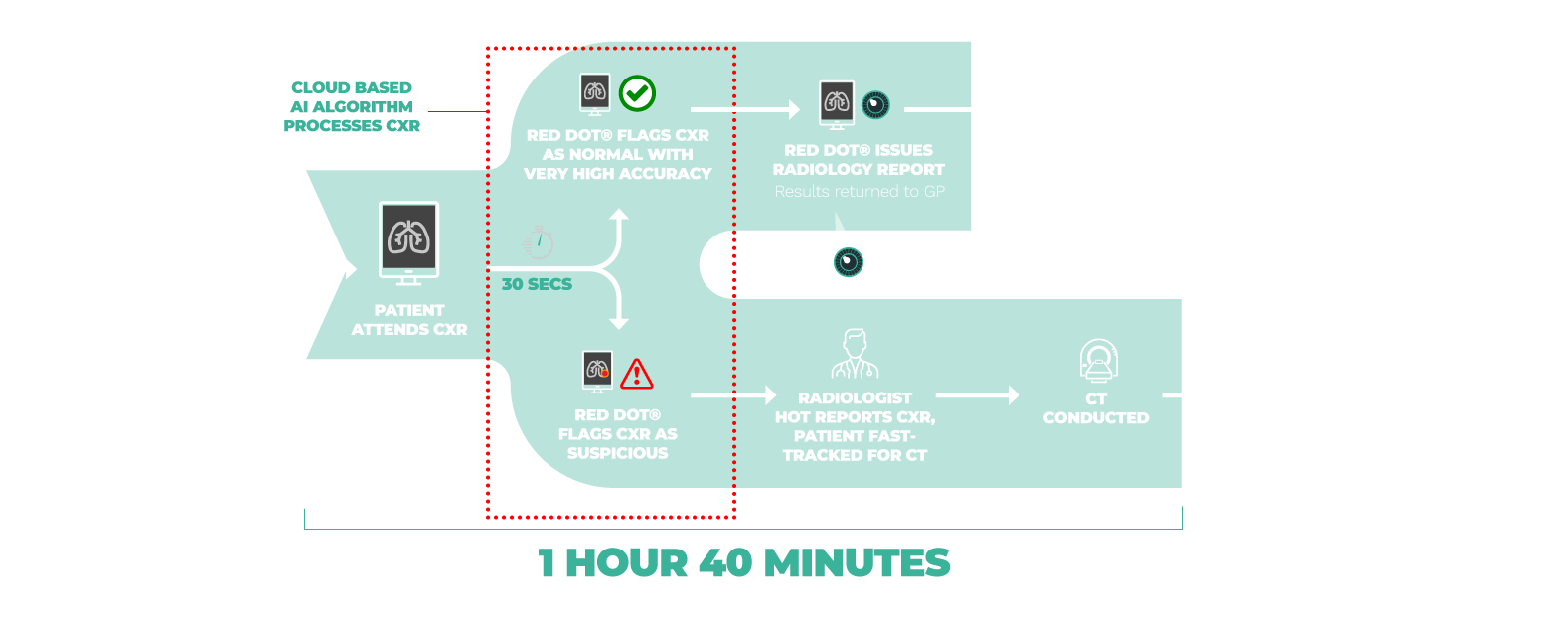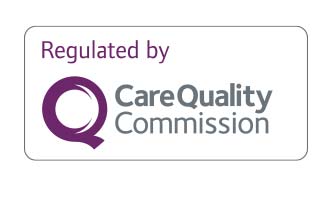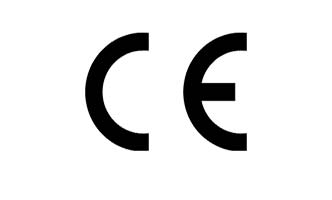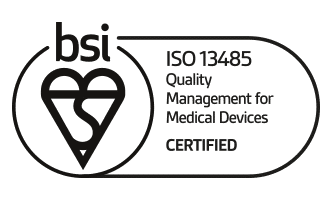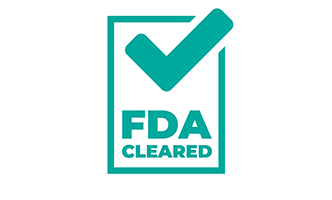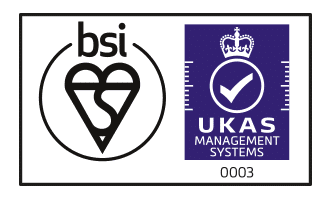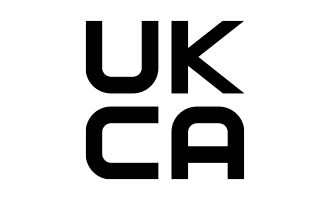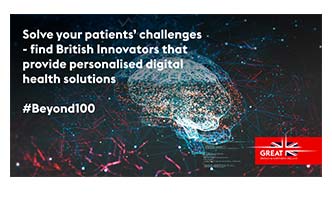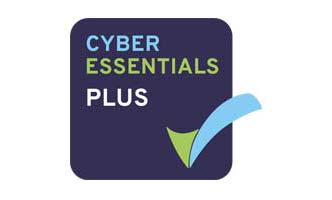An AI-enabled NHS lung cancer pathway can reduce patient CT wait times from weeks to minutes, free up valuable radiological resources, and save outsourcing costs by up to 70%.
Watch Simon Rasalingham, CEO of Behold.ai, describe the red dot ® Lung Cancer Detection Platform to Matt Whitty, CEO of Accelerated Access Collaborative.
Our red dot® platform can seamlessly integrate into the NHS lung cancer pathway
Speed up lung cancer diagnosis
CXRs identified as SLC are prioritised for hot-reporting and patient is fast-tracked for a same-day or next day CT Chest examination.

Increase radiology capacity
CXRs identified as HCN (normal with a very high degree of confidence) are autonomously reported, reducing radiology workload and reliance on outsourcing.
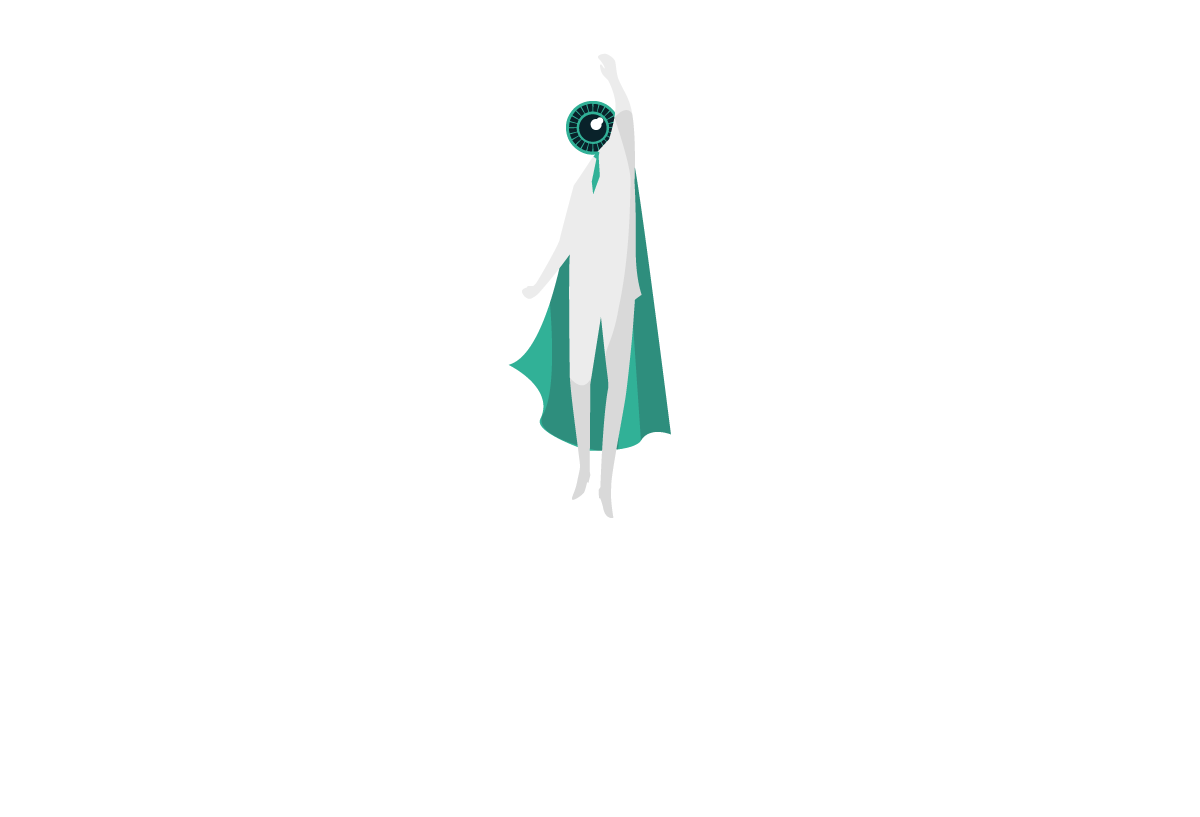
How does our red dot® Chest X-Ray solution perform?
15%
saving in radiologist workload
15% of CXRs auto-reported as normal, instantly removing them from the reporting workload
70%
reduction in outsourcing costs
Our AI rule-out normal algorithm can reduce outsourcing costs by up to 70%
0.33%
Error rate reporting CXRs as Normal
compared to 13.5% for consultant radiologists
60%
reduction in missed lung cancer cases
when implementing red dot® triage alongside consultant radiologists
Our evidence
“Diagnosis of normal chest X-rays using an autonomous deep learning algorithm” published in Clinical Radiology: We demonstrated that red dot® was capable of auto-reporting 15% of all CXRs as normal with an error rate of just 0.33%. This is compared to an average error rate of 13.5% for consultant radiologists.
“Augmenting lung cancer diagnosis on chest radiographs: positioning artificial intelligence to improve radiologist performance” published in Clinical Radiology: We demonstrated that in a tumour-enriched dataset implementing red dot® triage alongside consultant radiologists resulted in an overall reduction of missed lung cancer by 60%.
The clinical need for red dot® is clear...
Leading cause of death worldwide
2m
fatalities every year – lung cancer is the leading cause of cancer-related deaths worldwide
Biggest in the UK
#1
cause of cancer-related deaths in the UK but second most common malignancy
Long waiting list
274,000
patients estimated in the UK waiting 11 days or more for a report on imaging studies
An AI enabled pathway not only significantly reduces time to treatment but also reduces costs and increases radiological resources
£6.8m
saved per year
on outsourcing costs
39,000+
hours
of reporting time put back into the NHS through the delivery of HCN flags – the equivalent of 19 consultant radiologists
+60%
CTH scans identified as normal
Patients who have no acute clinical abnormality, with an NPV of 93%, and remove >60.65% of all CTH scans from the reporting workload.
Interested in talking to us about AI?
Get in touch to learn more about how red dot® can make a difference to your patients and your organisation.

